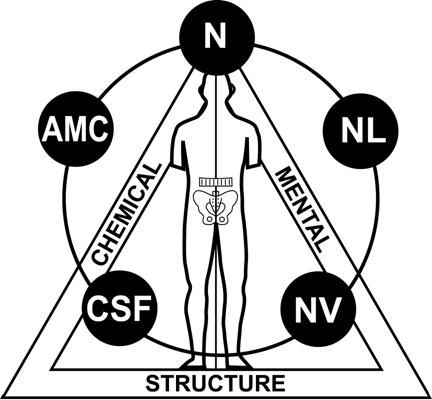
Kinesiology marked its beginning with the ideas of Aristotle (384-322 B.C.), who is often called the “father of biology.” The study of movement (the original kinesiology) has for centuries been centered upon anatomy and mechanics. Leonardo da Vinci (1452-1519) is especially well known for studies of human structure and function. These make him one of the best-known pioneers of the study of kinesiology. Little progress was made for two hundred years until Luigi Galvani made his discovery (1780) that muscle contractions are produced my electrical impulses through the body’s wiring system, the nerves.
A BRIEF HISTORY LESSON
Applied Kinesiology, the application of the study of movement, began with Dr. George J. Goodheart, a Chiropractor, in the 1960’s. Accepted Chiropractic practices served him well, for the most part of his practice, although he noticed an increasing number of his patients were not achieving optimal health. He began researching other methods of diagnosis and treatment to achieve the desired results for his patients.
Goodheart explored beyond the boundaries of his formal Chiropractic training to consider concepts of other innovative healers and scientists. He studied the traditional knowledge and research findings of may other healing systems (i.e. Chinese Acupuncture, lymphatic drainage, nutrition, neurology, etc.) then found ways to incorporate them into Applied Kinesiology. When a puzzling diagnostic situation arose that could not be addressed with the techniques he already knew, he experimented with others.
In 1964, Goodheart made the discovery that marks the birth of Applied Kinesiology, a unique application of muscle testing.
MUSCLES AND MUSCLE TESTING
Dr. George J. Goodheart
As a Chiropractor, Goodheart assumed that correcting structural imbalances in the body (postural problems, misalignment of bones, etc.) would reduce or eliminate most health problems. But bone and joint alignment cannot be obtained when muscles are overly tense or too limp because muscles control bones.
For several months, he unsuccessfully treated a patient with shoulder pain. The patient presented with one shoulder blade protruding out of his back further than the other. He remembered reading a Orthopedic text book on testing muscles by Kendall and Kendall. After properly testing his patients shoulder muscles, he found one that was weak and could not be strengthened after weeks of exercises. He decided to feel the muscle and found tender nodules at its attachment points. He rubbed these points with firm pressure and Viola! The muscle strengthened, the shoulder blade moved into the proper position, and the patients shoulder pain went away. This later became known as origin-insertion technique.
After further research Goodheart revealed that muscular imbalances may be the result of not just problems in the origin-insertion area of the muscle itself, but also in any areas represented by the three sides of the Chiropractic “triad-of-health” – that is, dysfunction could be the result of structural, chemical, and/or mental problems.
